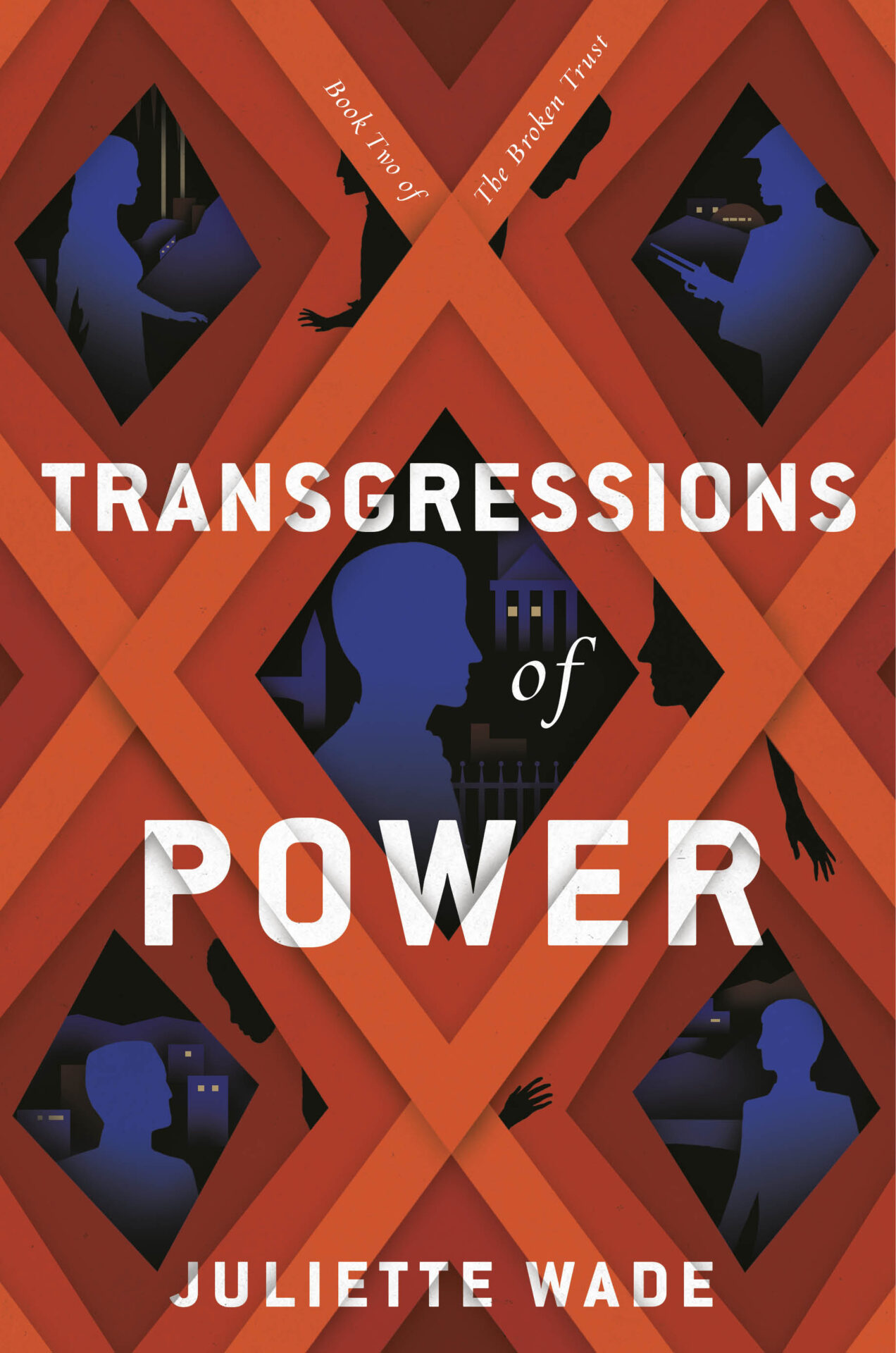
Juliette Wade is joining us today to talk about her novel,Transgressions of Power. Here’s the publisher’s description:
The second book of The Broken Trust continues a deadly battle for succession, in this sociological sci-fi novel where brother is pitted against brother in a singular chance to win power.
To marry into the most powerful family in Varin is to step into a trap. Della has spent thirteen years under the scrutiny of Pelismara’s political elites, supporting Tagaret in a dangerous pretense as his brother Nekantor’s closest ally. In secret, however, they’ve planned to escape, and to break down the restrictions of Varin’s caste society. When Nekantor offers to send them to Selimna, the city where their caste experiments can be carried out, how can they not accept the opportunity?
But ever since Nekantor seized power as the Eminence Herin’s Heir, he’s wanted to keep power in the family, and that means his eye is on the children–especially their thirteen-year-old brother Adon. In their absence, Nekantor begins to execute his own long-schemed plan, and soon Della realizes they’ve unwittingly become a part of it.
How far does Nekantor’s influence spread? How much will he seek to control? And how can she save Adon from falling into his snare?
What’s Juliette’s favorite bit?

JULIETTE WADE
I have always loved caves and caverns. In fact, descending into the 110-meter-deep Gouffre de Padirac in France made such an impression on twelve-year-old me that it inspired the entire world of Varin. Varin has a dangerous wilderness on its surface, and so all of its eight cities have been built underground, which has given me a chance to incorporate caverns and their characteristics into my worldbuilding. The first book of The Broken Trust, Mazes of Power, took place entirely in Pelismara, a structurally engineered city that occupies five levels of an enormous limestone cavern, a bit like a stack of round plates of descending size. My favorite thing about worldbuilding for Transgressions of Power, the second book in the series, was taking readers outside of Pelismara and visiting – which meant designing in detail – two other cities.
Caves vary a lot. The two cities we visit in Transgressions of Power are Daronvel and Selimna, and each one is designed based on a different real-world cave system.
Daronvel is a city amid mountains which exists because two cross-Varin roads intersect there. I decided to base my city design on the Turkish city of Derinkuyu (This article gives a good picture of it). Derinkuyu is a human-made city, dug by the inhabitants of the area during the 7th and 8th centuries, and expanded thereafter to accommodate twenty thousand people. It was intended as a place for the people to shelter from invading forces, and it included rooms for many purposes including homes and places of worship, and even a winery. Huge circular stones were used as doors to block anyone from entering, and water was brought up from below the city for use by the people there. What this kind of construction would mean for the lives of people in Daronvel, who would not also have homes on the surface, was great fun to explore. Daronvel people aren’t used to buildings that have outsides. They refer to cave spaces as “pockets” and “tunnels” rather than having roads that run between buildings, like you find in Pelismara. The largest space in Daronvel is the Daronvel Marketplace, a large hall-like space where people traveling the intersecting roads can sell goods from cities like Safe Harbor, Pelismara, Peak, Erin, and Selimna.
Selimna lies on the edge of the eastern plains of Varin, and it is a city built along a river. Its real-world model is the Skocjanske Jame, or Skocjan caves, in Slovenia (this website shows some striking views). The river Arzenmiri runs the length of Selimna, between tall cliffs of limestone, and the buildings are stacked on top of one another, trying to maximize use of the available space. Because the city is miles long, meandering, and consists of two facing cliffs, Selimna has public transportation in a way you won’t see in Pelismara (where the common people walk and the rich use maglev mopeds) or in Daronvel (where everyone simply walks). You can travel the length of the city via the Roofway, where cars painted with clouds travel slowly along rails. Once you’ve arrived at the part of the city you intend to visit, you reach the proper elevation by using one of a series of funicular cars which the people of Selimna call “The Ride.” At that point you have the option of crossing bridges that span from one cliff to the other, and perhaps catching another part of the Roofway on the other side. What this means is that Selimna has expansive views in a way that the other two cities don’t. The palace in which the nobles live has windows out on the city on one side, and on the other side, views out into the wild undeveloped cavern as the river continues.
Exploring these places has delighted me, and I hope you will come with me there in Transgressions of Power.
LINKS:
Transgressions of Power Universal Book Link
BIO:
Juliette Wade never outgrew of the habit of asking “why” about everything. This path led her to study foreign languages and to complete degrees in both anthropology and linguistics. Combining these with a fascination for worldbuilding and psychology, she creates multifaceted speculative fiction that holds a mirror to our own society.
